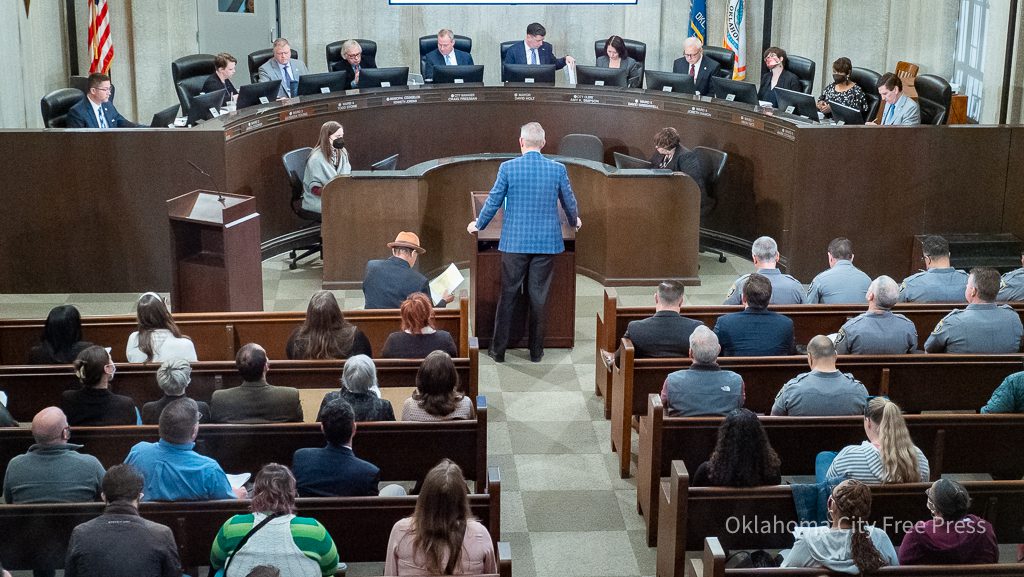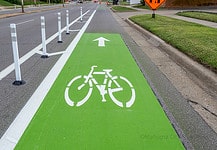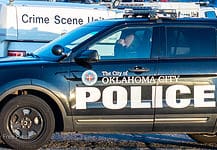Last Updated on October 12, 2022, 12:59 PM | Published: October 12, 2022
OKLAHOMA CITY (Free Press) — Tuesday, the City Council of Oklahoma City met in regular session and
- Voted to enter into an operating agreement with the Boys and Girls Clubs of Oklahoma City for four of the MAPS 4 Youth Centers
- Heard a representative from the ETC Institute, a national and well-respected polling company, about the latest round of data collected from resident surveys
- Heard an update on the 5-Year Capital Improvement Plan (CIP), the every-other-year plan for organizing large capital projects

Marty Peercy reports Local government
Youth centers
Teena Belcik, President and CEO of Boys and Girls Club of Oklahoma County, attended Tuesday’s meeting to give an overview of the services provided by her organization that they hope will be integrated to the MAPS 4 Youth Centers. The organization has been chosen as the operating partner of the centers.
Belcik gave a broad description of programming and successes of their programming across Oklahoma City.
The Clubs focus on three major categories with their participants:
- Academic Success (all school levels)
- Good Character and Citizenship
- Healthy Lifestyles (mental health as well, especially for participants with high ACE scores
The local organization has seen so much success with academic endeavors that the program has had a 100% high school graduation rate for the past eleven years.
Boys and Girls Club’s mission is specifically about reaching the young people who most need the programming.
Among participants in the local program, there are several eye-opening statistics. A breakdown of some of those follows.
- 95% are low income
- 20% are in DHS custody
- 84% live with a single parent/caregiver
- 15% have recently experienced homelessness
- 34% have at least one incarcerated parent
According to Belcik, “100% of participants are amazing kids with great talents.
Belcik called for “Youth Centers for All,” meaning the Youth Centers should be affordable and accessible to all young people. She told the Council that they should be located in areas with the greatest target population, should be accessible by transit and/or within walking distance of the potential clientele, and that a low- or no-fee approach would be critical to enduring the young people the programming is intended to serve.
Programming includes alcohol and drug abuse prevention, gang involvement prevention, and anti-bullying. Boys and Girls Club has 18 clubs across the city serving 15,000 youth.
Resident survey
The ETC Institute sends surveys to people spread across every ward in the City. The survey asks general and unweighted questions about satisfaction with city services and quality of life in the city. 1,343 surveys were completed and returned to the company.
The presentation demonstrated the broad and representative demographics among respondents.
According to the responses, Councilors were told that in many areas, Oklahoma City is setting the standard.
Quality of life questions show a high level of satisfaction. Questions in that category include ratings of Oklahoma City as a place to live, to work, and to raise children. Results showed Oklahoma City far ahead of the national average on these questions.
Major city services, such as utility and solid waste services provided, also exceed national averages except for in two categories. It is no surprise that city residents have below average satisfaction with street conditions. The feeling of safety residents reported, was lower than in previous years. Many people referred to homelessness as part of their lack of feeling safe.
After the presentation, Ward 6 Councilor JoBeth Hamon* explained that all data on homelessness tells us that people experiencing homelessness are far more likely to be a victim of violence than to use violence
Like most cities across America, ratings among residents have declined since previous years, suggesting that residents expect to return to a pre-COVID level of services, which simply isn’t realistic as the City navigates the still continuing worldwide pandemic that has killed many millions of people and continues to do so.
Opportunities for improvement were also highlighted by the surveys, especially in the areas of, as mentioned street condition, as well as street and traffic flow, code enforcement, and public transit. Those services routinely are reported as the least satisfying in Oklahoma City.
Capital improvement
City staff gave a report to Council on the 5-Year Capital Improvement Plan (CIP). The CIP is updated every other year to organize large projects coming in the coming five fiscal years.
Ian Hutchinson of the Budget Department told the Council that the 5-year plan expects $3,610,136,234 for the FY23-FY27 Plan Period. Sources of that money include G.O. Bonds, sales tax collections, and for the largest share at 51% of the amount comes from Trust funds held by the city.
The biggest part of the Plan is for Utilities, which will take up $1,706,030,000 of the planned budget projections.
Thanks to excess collections from the MAPS sales tax, many other projects will be completed under this plan. The price tags are as follows:
- MAPS 3 Union Station Renovation, $17 million
- MAPS 3 “other” $9 million
- MAPS 4
- Diversion Hub $17 million
- Homelessness $22 million
- Palomar $46 million
- Mental Health $39 million
- Parks $98 million
- Youth Centers $72 million
- Animal Shelter $42 million
- Senior Wellness $16 million
- Clara Luper Civil Rights Center $17 million
- Transit $69 million
- Beautification $17 million
- Sidewalks, bike lanes, trails, streetlights $65 million
- Innovation District $29 million
- State Fairgrounds coliseum $82 million
- Multipurpose stadium $41 million
- Basketball practice facility $11 million
- Public works also holds a significant portion of that planned funding at $95 million. The project types are
- Street widening
- Drainage
- Resurfacing
- Bridges
- Intersection/Traffic control
- Sidewalks
- Street enhancements
- Facilities
Street improvements will carry $384 million in the CIP.
The City Council will meet again on October 25 at 8:30 a.m.
Columnist covering local government in Oklahoma City and Oklahoma County from May 2019 through June 2023.










